By using this website you agree to our use of cookies. If you require more information or prefer not to accept cookies please visit our Privacy Policy >
Gaming monitor buying guide - The 10 most important things to consider when buying a monitor (Part 1/2)
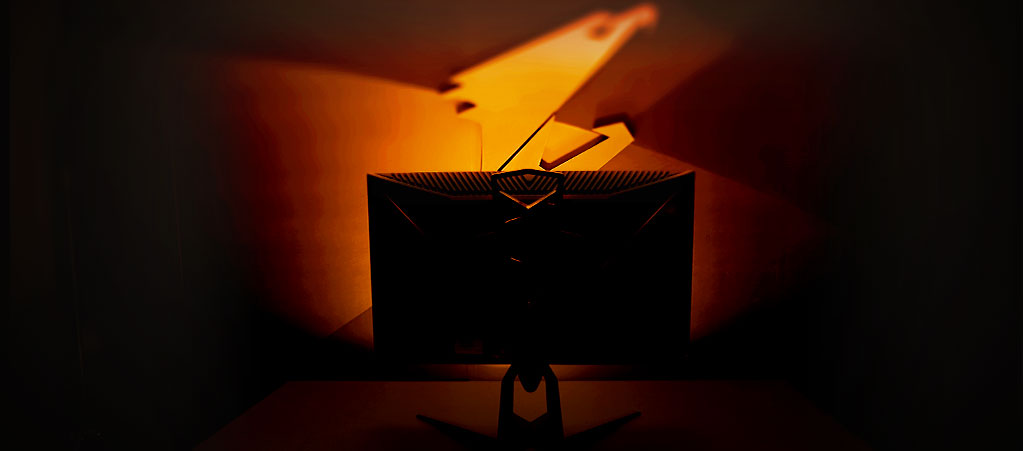
When people are trying to pick a gaming monitor from so many options in the market, they often ask themselves these questions:
- What's the difference between a regular monitor and a gaming monitor?
- There are so many specs! How should I understand them?
The AORUS editorial team have heard your voice. We have organized the 10 most important things to consider when you are picking a gaming monitor. Through this article, you will easily understand the meaning of each spec and understand what kind of monitor suits you the best, so you can pick the monitor that is just right for you.
What kind of gamer are you? AAA lover? Role player? Or an eSports gosu?
The first thing to do when you are buying a gaming monitor is to define what kind of gamer you are.
The games you play the most determines what gaming experience you want, and this indicates to what specs are important to you which you don’t want to compromise.
In general, gamers that loves AAA games wants to enjoy the spectacular and delicate picture quality the game brings you, and have that imersive feel when you are wondering through the game, which is one of the biggest pleasures of playing an AAA game. If you are this kind of gamer, you might want a monitor which is big in size、high in resolution and high in color saturation.
And gamers who loves competitive gaming usually needs to swiftly change between scences or rapidly rotate the perspective to spectate the environment or trace moving enemies. It is very important for these kind of gamers to have a very fluent picture to help them aim down their enemies. For these games, the size of the monitor shouldn’t be too large, and they should focus on specs like refresh rate and response time .

In competitive games, gamers rotate their perspective rapidly(Game:Overwatch)

The picture of AAA games are always spectacular and delicate.(Game: ASSASSIN'S CREED: ORIGINS)
1. What size should I pick? It depends on what game do you play.
The first thing you think of when picking a monitor is size. When we say “size”, it means the length of the monitor screen diagonally across in inches.
The most suitable size for a monitor to play game is about 24 inch to 32 inch, and it is not the bigger the better. First of all, you’ll need to know how much space does your desk have for your monitor; then you should consider what game do you play, and what size is the best for that game.
If you play mostly MMORPGs, such as The Elder Scrolls Online, World of Warcraft, Blade & Soul, and Black Desert Online, you not only want to solve quests, but also want to enjoy the imersive feeling when playing it. In this case, if your desk is large enough you might want to consider a bigger monitor around 27-32 inch . But don’t forget, when you choose a big monitor the resolution of it shouldn’t be too low, or else it will effect the picture quality when you look at it.
If you are a gamer that plays competitve games , such as: PUBG, Rainbow Six Siege, Overwatch, and League of Legends, we reconmend you a smaller monitor around 24-27 inch, because most of these competitive games puts important information, such as mini map, HP status, and skill status, at the corner or the edge of the monitor. If the screen is too big, you might need to swing your head often to get the information, this not only makes your neck sore but also makes it hard for you to predominate the situation.
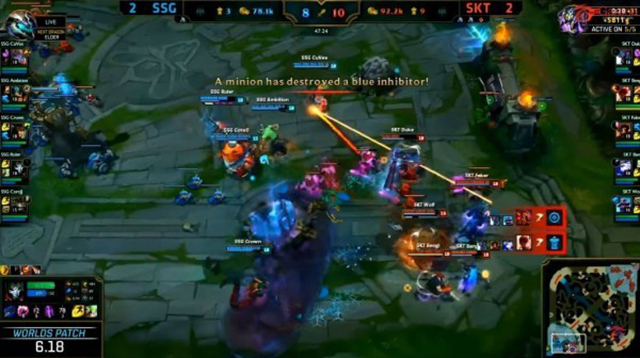
Most of the competitive games put the impotant informations at the corner or the edge of the screen.(Game: League of Legends)
2. “Resolution”, should I cut it down? Confirm your size and grapihics card first.
“Resolution” indicates how delicate the screen can display. The lower the resolution is, the grainier the picture looks; The higher the resolution is, the more delicate the picture looks.
Most of the monitors in the market has a 16:9 aspect ratio, the main specs of resolution are:
- 1920x1080 (FHD/ 1080p)
- 2560x1440 (QHD/ 2K)
- 3840x2160 (UHD/ 4K), but 4K monitors are not popular yet.

The higher the resolution is, the more beautiful the picture will be, but the more expensive the monitor will be, and you will need a more powerful graphics card to support the monitor as well. Or else, having a monitor that can deliver great picture quality but don’t have the picture quality to deliver to is a kind of sad, you wont be able to see the picture quality that the monitor can present you to.
As a result, we suggest gamers who has a budget concern pick a 1080p (1920x1080) monitor if it is under 27-inch and consider 2K resolution (2560x1440) if the monitor is above 27-inch. If you don’t have a budget concern, the higher the resolution the better!
If you are aiming for 32-inch 1080p resolution, you might want to think again, because a low resolution screen on a big size monitor can be quite grainy. If you are aiming for a 32-inch monitor or above, we recommend you to go for 2K resolution.
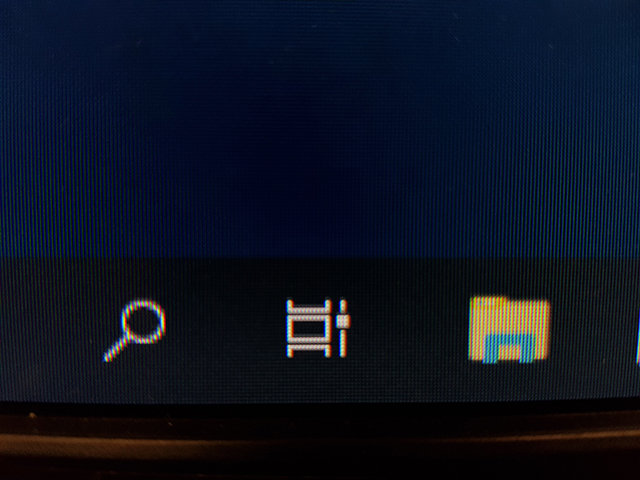
It is a bit grainier on a 1080p resolution monitor
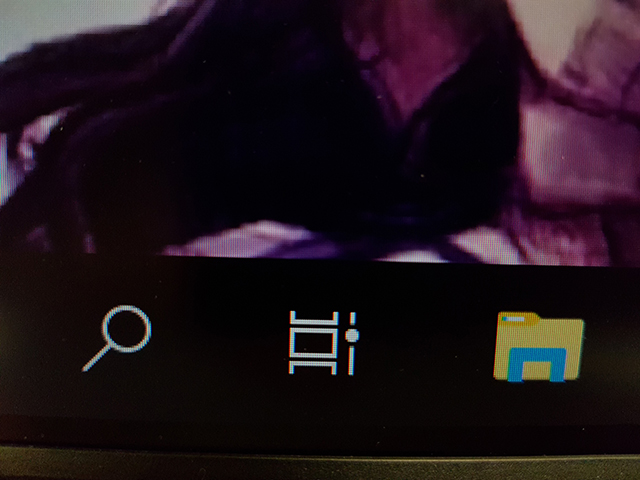
The picture on 2K resolution monitor is much delicate
3. ”Refresh Rate”, aim for 144Hz then sit back and enjoy
“Refresh Rate” in Hertz (Hz) means how many pictures can be updated per second.
If your graphics card can render 100 frames per second but you only have a 60Hz monitor then you will only see 60 pictures at most from your monitor; so the higher the refresh rate is, the more pictures you can see, and the more fluent your game image will be. In the other hand, if your graphics card can only render 60 frames per second, even if you have a 144Hz monitor, you can only see 60 pictures per socond. So you’ll need a graphics card that can support your 144Hz monitor when you buy one. From our experiecne, generally you’ll need a GTX1060 graphics card or above to maintain 144Hz or above while gaming.
The fluentness of a monitor is something very easy to feel. If you don't have a very awful graphics card we do recommend that you buy a new monitor with high refresh rate. If you have the chance to try a high refresh rate monitor yourself, please do! Changing from 60Hz to 144Hz is a total different experience, you can easily feel the awesomenness that a 144Hz monitor can bring you. The fluentness of the image is especiall important for FPS (First Person Shooting) gamers. In FPS games, gamers need to rapidly turn their perspective to aim moving enemies; with a fluent image, gamers will be able to trace down their enemy much easier, as a result, aiming with a better precission.
How much refresh rate is enough? Mainly, gaming monitors have a refresh rate of 144Hz, if you are just stepping in to buy a gaming monitor, we recommend you to buy a 144Hz monitor. If you are a hardcore gamer and want to go straightly to the sweet spot, a 180Hz monitor will fit you. Because most gamers will not be able to distinguish a refresh rate above 180Hz, only gifted gamers will be able to tell the difference.
A high refresh rate monitor allows you to see more frames. As a result the picture will be more fluent
4. Buying a gaming monitor, “response time”better be under 4ms
A lot of people misunderstand the term “response time” as the latency of the output of the monitor. But actually it isn't. Response time is how fast a crystal in the LCD (Liquid Crystal Display) panel can spin to the correct position; in other words, how fast the panel can fully change from the previous picture to the next picture. The technique of a LCD panel to display color is to turn the crystal in each pixel to a certain position so that the pixel can display a certain color. So how fast the crystal can turn indicates how fast the picture can change.
If the picture changes too slow then you will see the shadow of the last picture which is sometimes refered as “ghosting”. FPS gamers will not want to see this while gaming. In a fast paced game, ghosting will let your target look blurry, as a result, the target becomes hard to aim which is something an FPS gamer don’t want to see. On the other hand, a monitor with a faster response time will give you a sharper image which is much better for gamers.
For gamers that needs to trace their enemy in a fast paced game, such as FPS games, we reconmend to pick a monitor with response time less than 1ms. And for gamers that requires better color performance, a monitor with 4ms respose time will be acceptable.
In theory, response time should be the faster the better; but the fact is, response time is realted to what type of panel you are using. Some panels have beautiful colors but the response time is not that fast; some other panels are very resposive, but performs less in color. So let us explain more about panel properties in the next section!
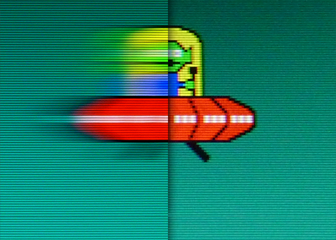
Response time decides how sharp you can see from a moving object
5. Picking a right “Panel” is confirming your needs.
Panel can be categorized into 3 types: TN, VA, and IPS. The difference between them is how the crystal turns in the LCD panel. The difference of how they turn resulted in the property of the panel. So let's do a quick intro of the panels, and let you know what kind of panel suits for what kind of gamer:
- TN (Twisted Nematic) - Best for FPS gamers
- IPS (In-Plane Switching) – for designers and gamers who require great color quality.
- VA (Vertical Alignment) – Perfect for movie lovers and gamers who loves to see more details
The nature of TN panel is fast in response and cheap , but the color isn't that great, and the viewing angle is not wide either. For FPS gamers, this panel is usually their best pick, because what FPS gamers needs most is high refresh rate and fast response time, and TN panel is the expert of it. The only panel that can go up to 240Hz is TN panel due to its super-fast response time.
The nature of IPS panel is beautiful and accurate color performance , so mostly designers loves to use IPS panels. If you don't play that much FPS games and requires beautiful colors, then IPS panel might be a good choice for you.
The nature of VA panel is high in contrast ratio . It performes the most perfect “black” in the 3 panels. In a LCD monitor, you need a back light module to light up the screen, so showing the color “black” in a LCD panel actually means to use the crystals to blcok the light emmiting from the back light module. And the way that the crystal aligns in a VA panel happens to be the tightest, so the black of the panel as a result is the darkest, not like other panels will show a “glowing black”.
Then you might ask, “What is the benefit of having a darker black?”. Well, do you ever had this kind of experience, whenever you are in a dark scene, not matter it is in-game or in movie, every detail of the scene is fused into a single black. This is the problem of not having a panel with enough contrast ratio. But VA panel with its nature of having a high contrast ratio can avoid this problem, pictures can show more detail due to the high contrast ratio that this panel provides. For gamers who also watches movies or loves to play horror games or adventure games will love this panel!
Here is table for you to understand:
Response time: TN > IPS and VA
Contrast Ratio: VA > TN and IPS
Color performance: IPS > VA > TN
| TN | VA | IPS | |
|---|---|---|---|
| Response time | ★★★ | ★ | ★ |
| Contrast Ratio | ★ | ★★★ | ★ |
| Color performance | ★ | ★★ | ★★★ |
In the next part, we will be introducing the other 5 important things that needs to be considered when buying a gaming monitor:
- Contrast Ratio
- Do I need a curved monitor?
- What’s the difference between FreeSync and G-Sync
- Don’t forget to measure the depth
- Budget is always the reality

